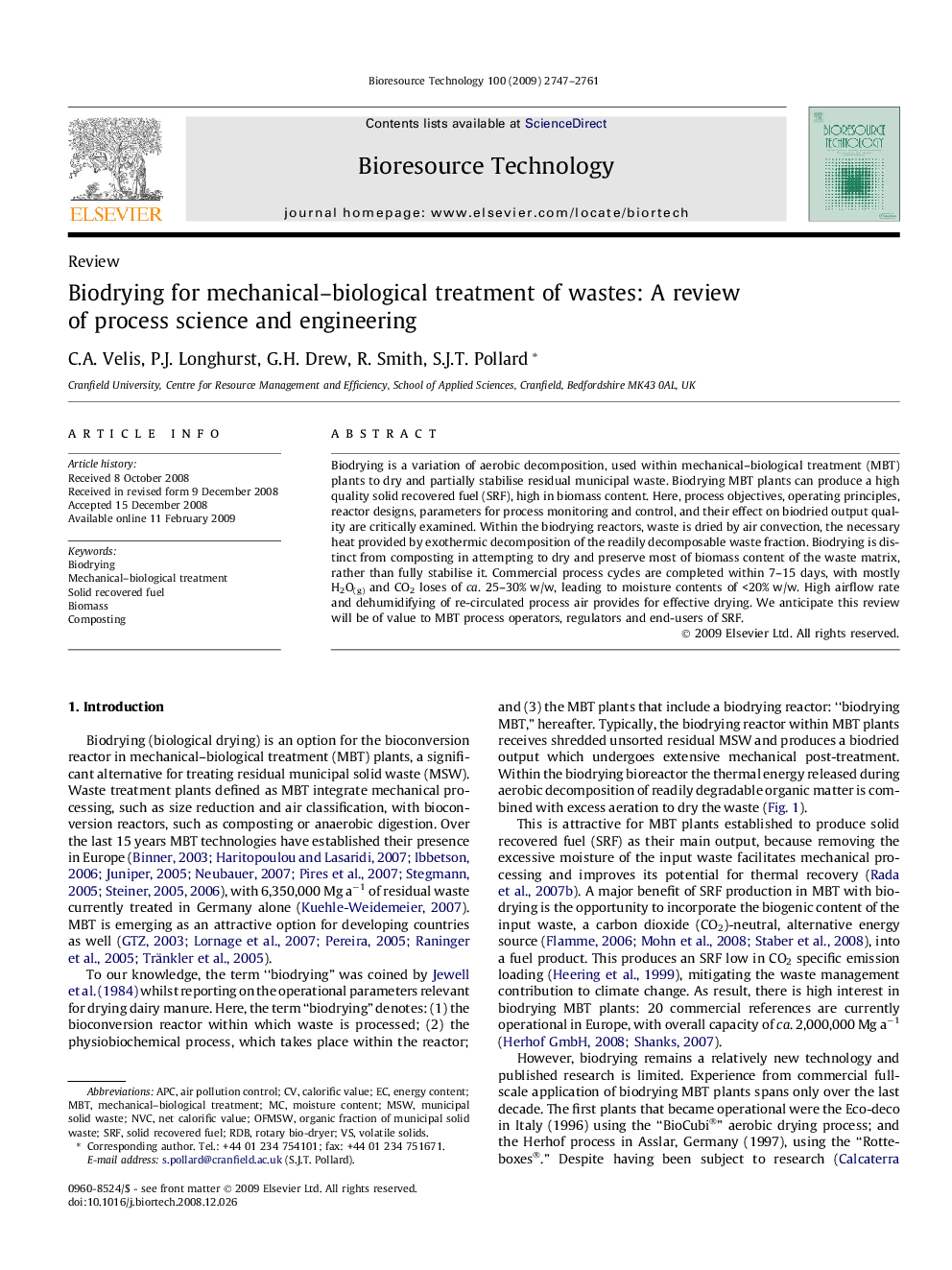| Article ID | Journal | Published Year | Pages | File Type |
|---|---|---|---|---|
| 685339 | Bioresource Technology | 2009 | 15 Pages |
Biodrying is a variation of aerobic decomposition, used within mechanical–biological treatment (MBT) plants to dry and partially stabilise residual municipal waste. Biodrying MBT plants can produce a high quality solid recovered fuel (SRF), high in biomass content. Here, process objectives, operating principles, reactor designs, parameters for process monitoring and control, and their effect on biodried output quality are critically examined. Within the biodrying reactors, waste is dried by air convection, the necessary heat provided by exothermic decomposition of the readily decomposable waste fraction. Biodrying is distinct from composting in attempting to dry and preserve most of biomass content of the waste matrix, rather than fully stabilise it. Commercial process cycles are completed within 7–15 days, with mostly H2O(g) and CO2 loses of ca. 25–30% w/w, leading to moisture contents of <20% w/w. High airflow rate and dehumidifying of re-circulated process air provides for effective drying. We anticipate this review will be of value to MBT process operators, regulators and end-users of SRF.
